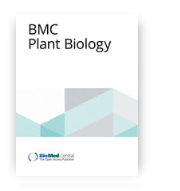The adjustment of China endemic Heptacodium miconioides Rehd. to temperate zone of Poland
Marta Joanna Monder; Przemysław Bąbelewski; Jakub Szperlik; Agnieszka Kościelak
BMC Plant Biology
Ministerial score = 140.0
Journal Impact Factor (2023) = 5,260 (Q1)
 Heptacodium miconioides is an increasingly popular ornamental plant, originally being endemic to China. The late and long flowering determines its ecological and ornamental value in cultivation. The aims of this research were to define and distinguish phenological phases of the development of Heptacodium miconioides in the temperate zone region and identification of anatomical changes within the stem during autumn in relation to phenological phases and climatic conditions. Phenological observations were carried out in Wrocław during 2012–2013, as well as in Warsaw (Poland, 52.6°N, 20.5°E) during 2018–2021. During the last year of research an analysis of the anatomical structure was carried out for young stems that bore flowers that year, as well as older, 2- to 6-year-old ones. The material was collected H1 – 10.09., H2 – 28.09., H3 – 16.10., H4 – 3.11., H5 – 21.11. The width of annual increments in subsequent years was determined; length, width and vessel density in early and latewood for subsequent rings of annual growth was measured, as well as the width of the phloem in 1–6-year-old stems (2016–2021). In the vegetative stage three main stages of development were distinguished (leaf buds have the green tips; full autumn discoloration of leaves; leaves falling). In the generative phase, which lasted on average from August 22nd to January the 7th five main phases of development were distinguished (flowering, unripe fruits, ripe fruits, spreading of seeds). Increased average temperature during winter and spring had an effect on the growth pattern: early phenological stages occurred sooner and foliage development lasted 44 days longer. Flowering occurred at a similar date at both observed locations and climatic conditions. This year’s shoots flowering on a radial section with axial symmetry, were slightly flattened and in clusters arranged regularly to match the shape. Heptacodium develops 2–6 years old shoots with radial symmetry. The growth ring boundaries are distinct, the wood semi-rings porous, with marked differences in the structure of the primary and secondary shoot. Lignification of tissues before winter ends during late leaf-fall phase. The research indicated the adaptive potential of Heptacodium in response to climatic conditions of temperate zone.
Heptacodium miconioides is an increasingly popular ornamental plant, originally being endemic to China. The late and long flowering determines its ecological and ornamental value in cultivation. The aims of this research were to define and distinguish phenological phases of the development of Heptacodium miconioides in the temperate zone region and identification of anatomical changes within the stem during autumn in relation to phenological phases and climatic conditions. Phenological observations were carried out in Wrocław during 2012–2013, as well as in Warsaw (Poland, 52.6°N, 20.5°E) during 2018–2021. During the last year of research an analysis of the anatomical structure was carried out for young stems that bore flowers that year, as well as older, 2- to 6-year-old ones. The material was collected H1 – 10.09., H2 – 28.09., H3 – 16.10., H4 – 3.11., H5 – 21.11. The width of annual increments in subsequent years was determined; length, width and vessel density in early and latewood for subsequent rings of annual growth was measured, as well as the width of the phloem in 1–6-year-old stems (2016–2021). In the vegetative stage three main stages of development were distinguished (leaf buds have the green tips; full autumn discoloration of leaves; leaves falling). In the generative phase, which lasted on average from August 22nd to January the 7th five main phases of development were distinguished (flowering, unripe fruits, ripe fruits, spreading of seeds). Increased average temperature during winter and spring had an effect on the growth pattern: early phenological stages occurred sooner and foliage development lasted 44 days longer. Flowering occurred at a similar date at both observed locations and climatic conditions. This year’s shoots flowering on a radial section with axial symmetry, were slightly flattened and in clusters arranged regularly to match the shape. Heptacodium develops 2–6 years old shoots with radial symmetry. The growth ring boundaries are distinct, the wood semi-rings porous, with marked differences in the structure of the primary and secondary shoot. Lignification of tissues before winter ends during late leaf-fall phase. The research indicated the adaptive potential of Heptacodium in response to climatic conditions of temperate zone.
DOI:10.1186/s12870-023-04205-y









